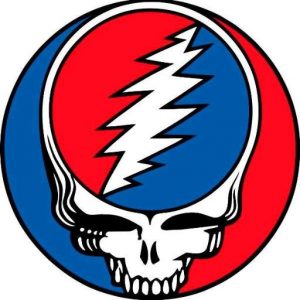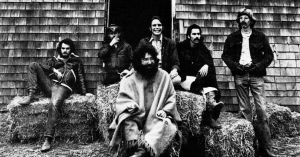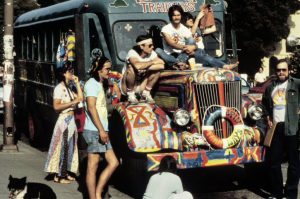
The Deadhead Culture: More Alive Than You Think
Did you know that there is a group in the rural town of Matehuala, Mexico who pride themselves in wearing large, colorful pointed shoes? How about the group in Botswana known as the “Renegades” that dress up like cowboys headed to a heavy metal concert? To someone like you and me, these groups may seem peculiar and their beliefs seemingly pointless. However, often times there is lots of meaning and purpose behind the practices and values of specific subcultures and countercultures. For the group in Mexico, the practice of wearing these massive, pointy shoes revolves around tribal dancing competitions. For the Renegades, dressing up like a heavy metal cowboy is a way of expressing their desire to defy the status quo. Still, from afar it is difficult to understand and accept the practices of subcultures that differ from what we consider to be “normal” – especially when those practices differ so vastly from our own norms. The fan group of the American rock band The Grateful Dead is no exception to this. Formally known as the “Deadheads,” or “Heads” for short, this group is widely known for their heavy consumption of hallucinogenic narcotics, outlandish styles of clothing, and robust obsession with The Grateful Dead and their music. At a glance, many would categorize them as hippies or simply view them as drug-crazed fans of music. But is it possible that there is more to the Deadhead culture than what meets the eye?

The Grateful Dead, otherwise known as “The Dead,” was one of the most iconic American rock bands to ever take the stage. The band’s formation occurred at the height of the counterculture movement of the 1960’s in San Francisco, California, and flourished into thirty successful years on tour. Originally centered around blues and rhythm, their music resembled much of the likes of Jimi Hendrix and Janis Joplin. However, after the Acid Tests of the mid-1960’s – don’t worry I am definitely coming back to this – they began to shift towards more psychedelic and improvisational rock as this was a more compatible genre with the intended purpose of their songs and, more importantly, their live performances.
Although they produced a limited number of radio hits, the Dead became one of the most acknowledged touring bands of the twentieth century. Over their three-decade span of touring, they performed over 2,300 shows. Their music was, in the eyes of Rock fans around the world, “spectacular.” But what really made them a legendary group was the success and popularity of their live performances. The connection that developed between the musicians on stage and the fans in the audience was unlike any other. What began as a relatively unknown group emerging out of the San Francisco music scene quickly transformed into an extremely popular live performing band with a substantial national fan base – the Deadheads.

But what’s all the hype? What made the connection between the Dead and the Deadheads so significant in comparison to other bands and their followers? There are lots of diehard music fans out there, but nearly all of them fail to come close to the commitment and enthusiasm that is associated with the Deadheads. The main answer to this question is simple: drugs – specifically, psychedelic drugs. The consumption of mind-altering drugs such as Lysergic acid diethylamide (LSD), Psilocybin mushrooms (commonly referred to as “shrooms”), and marijuana, allowed Deadheads to enter a heightened state of consciousness that they used as fuel to connect with the music and its performers. The Dead collaborated with author and friend Ken Kesey to make their debut at the Acid Tests, which took place in the San Francisco Bay area during the mid-1960’s. At a glance, the Acid Tests were night-long parties centered around the consumption of drugs (mainly LSD), intense light shows and visual displays, and music (Kaler, 6). Here, participants were encouraged to act out against societal norms and express themselves in excessive ways. Through extravagant dress, dancing, and singing, they were able to think and act freely, connecting with the music and the people around them.
The success of the Dead’s shows at the Acid Tests became known across the San Francisco area and quickly spread across the country shortly after. According to Michael Kaler’s research article Music and the Divine: The Acid Tests and their Role in the Grateful Dead’s Foundation Story, participants who attended the Dead’s performances at the Acid Tests talked about their experiences as magical. The combination of music, dance, and visual displays – all while under the influence of mind-altering drugs – allowed participants to embark on a spiritual journey as they connected with the music, the performers on stage, and the surrounding crowd. Lots of this “magic” can be attributed to the improvisation of the performers on stage. While on tour, the Dead made sure that no two shows were the same. They often took cues from the crowd when selecting which track to play next and always made sure to include an encore. These traditions ensured that each concert experience was unique. And so, the Dead were able to continually connect with their fans in different, meaningful ways each time they performed.

Talk amongst frequent concert attendees lead to the belief that the experiences at the Dead’s shows were fictional and completely mythological. While the way these experiences were mythologized attracted more fans, it also developed a sense of religious power within the group. On page 7 of his article, Kaler goes on to claim: “This freely occurring ‘magic’ – the overwhelming presence of what was felt to be a deeply meaningful, if often inexpressible, coincidence – was interpreted by many group members as being signs of the manifestation of a divine energy. After the realization of this concept of divinity, The Dead made it their goal in each show to embark on a meaningful spiritual journey alongside the Deadheads in the crowd. In his autobiography, founding member and lead bass guitarist Phil Lesh states: “At the beginning we were a band playing a gig. At the end we had become shamans helping to channel the transcendent into our mundane lives and those of our listeners.” Through the “magic” of their shows, the Grateful Dead was able to develop a form of religion within its followers without even attempting to do so – who knew! Just as Christians attend church every Sunday and Muslims engage in prayer five times a day, Deadheads attend Grateful Dead concerts.
The bond that was created between the Dead and their fans during the onset of their formation marked the beginning of something unique and special: Deadhead culture. Deadheads from around the country loyally followed the band from show to show during their thirty years on tour. Their commitment level was unmatched. It didn’t matter if you had just seen a show the previous weekend or if there was a long commute to see the next one, if you were a true Deadhead, you travelled to experience the next show. Even if you didn’t have a ticket or couldn’t afford one, you would make an effort to get to the next show on the off chance that you might be able to get in. Knowing this, frequent attendees often traveled to concerts bearing an extra ticket with the intent of giving it to a fellow Deadhead in need. This phenomenon became widely known as a “miracle” – properly named after the Dead’s popular song “I Need a Miracle” – as the lucky fans who received a ticket were finally able to attend a live show. This reinforces the idea of religion that resonates within Deadhead culture, but in a more abstract way. Think about it like this: Just as Jesus turned water into wine, Deadheads granted tickets to those in need. But back to my point on commitment: Even if you didn’t get in – so what! There would be plenty of other Deadheads who failed to make it in to hang out and enjoy the concert with from the parking lot. This level of commitment truly indicates how excessively the Dead captured the hearts and minds of their followers.
But it doesn’t stop there. This excessive level of commitment is evenly matched by the enticing elements of community that resided within Deadhead culture. For Deadheads, the communal aspect of their culture is rooted in the concert experience. Shows became an escape from the conformity of society – a place where they could be themselves alongside so many others without any judgment from the outside world. In his article The Deadhead Subculture, Ben Grubb argues that the Deadhead community offers a heightened sense of companionship and togetherness: As an increasing amount of “regulars” began to attend shows around the country, a mailing list was produced in 1971 that connected diehard Dead fans with concert updates and band news. In addition, it became very popular to record live shows from the audience, which was something that was encouraged by the members of the Dead. A “tapers” section developed at shows across the country in order to facilitate this practice and parking lots were transformed into markets as vendors bartered with fellow Deadheads about tapes from specific shows. Furthermore, a section was established at Dead concerts that consisted of Deadheads committed to sobriety – yes, not every Deadhead was a druggy! Easily spotted by their trademark display of yellow balloons, this group was referred to as “Wharf Rats” and were widely supported by fellow Deadheads and the members of the band themselves. This strong level of community sheds light on the meaning and purpose that is rooted within Deadhead culture.

Despite the disbandment of the group after the death of the band’s founder and lead singer Jerry Garcia in 1995, the Deadhead community lives on today. Although their culture will never be the same as it was while the band was still active, Deadheads have been able to remain a closely knit group through other bands possessing similar characteristics such as Phish and Rusted Root. In 2015, a group called The Dead & Company formed, consisting of former Dead members Bob Weir, Mickey Hart, and Bill Kreutzmann as well as the addition of the popular John Mayer. Deadheads from around the country flocked to Madison Square Garden in New York City for a chance to see the first live performance of the new band and to reunite with the culture that had played such a crucial role in their lives. To an outsider, it is difficult to understand the purpose and meaning behind Deadhead culture. But what seems to be a drug-crazed, non-conformist fan base on the surface is really a strong community that shares many of the basic ideals of the communities that we know so well today such as camaraderie, collaboration, and enjoyment.
And so, my answer to my original question is a resounding yes – there is definitely more to the Deadhead culture than what meets the eye. What the Dead was able to achieve through their fan base was special though underappreciated and unrecognized by society at large. So keep your eyes peeled and your mind open. You’ll be surprised by the amount of purpose that is hidden away within subcultures that look deviant and unappealing from a distance.